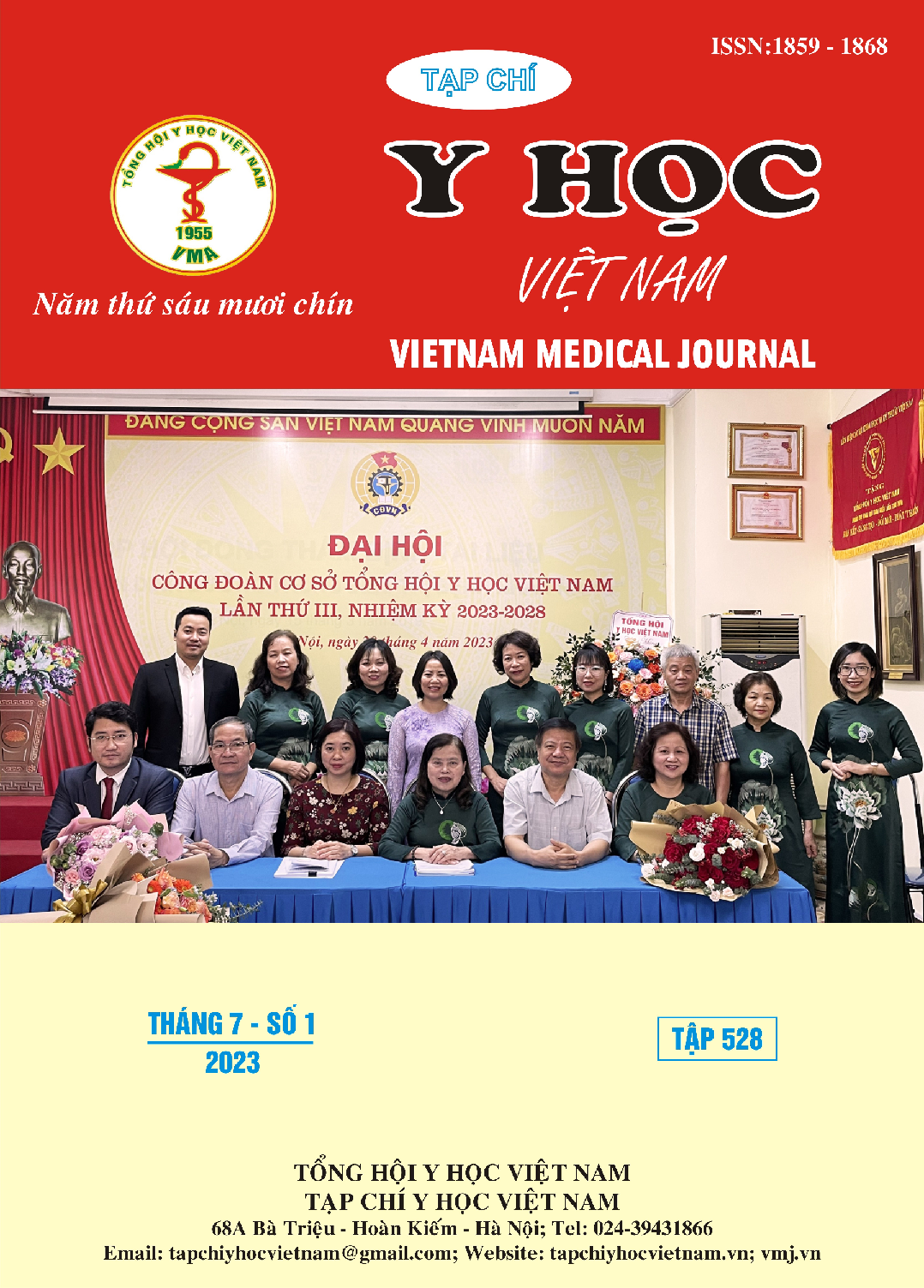INVESTIGATION ON DRUG USE AND THERAPEUTIC OUTCOME IN OUTPATIENTS WITH HELICOBACTER PYLORI-ASSOCIATED PEPTIC ULCER DISEASE AT DONG NAI HOSPITAL
Main Article Content
Abstract
Objectives: This study aims to analyze the use of drugs treating Helicobacter pylori-associated peptic ulcer disease and evaluate the therapeutic outcome of regimen treating H.pylori. Methods: Retrospective, cross-sectional, descriptive of prescriptions and therapeutic outcome to outpatients with H.pylori diagnosis. Results: The most commonly used regimen is PBMT, accounting for 77,8%; the main concomitant drug is antacid 50,9%. The most common ADE was diarrhea (28,6%). The mean time for the treatment regimen was 14 days. Effective treatment: the number of patients who had no clinical symptoms was 78%, the rate of H. Pylori eradication compared to the number of patients who went for re-examination and breath test was 94%. 3 factors: gender (p=0,005, OR=2,968, 95% CI 1,557-15,812), medication adherence (p=0,028, OR=11,971, 95% CI 1,311-109,283) and occupation (p=0,049, OR = 7,005, 95% CI 0,99-49,568) is related to the patient's treatment effect. Conclusion: The drugs used in the treatment of peptic ulcers caused by H. Pylori are mostly consistent with the reference guidelines. Gender, occupation and level of medication adherence are factors related to treatment effectiveness.
Article Details
Keywords
: Helicobacter pylori-associated peptic ulcer, the use of drug, medication adherence
References
2. Đặng Ngọc Quý Huệ, Trần Văn Huy, Nguyễn Sĩ Tuấn, và cs (2014). Đánh giá H. pylori đề kháng với Clarithromycin và Levofloxacin bằng Epsilometer test tại Đồng Nai, năm 2013. Y học thực hành, 903(1), tr.89-93.
3. Đào Thị Lan (2020). Khảo sát tình hình sử dụng thuốc và sự tuân thủ dùng thuốc ở bệnh nhân viêm loét dạ dày-tá tràng do H.pylori tại bệnh viện Đa khoa khu vực Định quán.
4. Lê Thị Xuân Thảo (2016). Tuân thủ điều trị tiệt trừ H. pylori ở BN viêm loét dạ dày tá tràng. Hội nghị khoa học kỹ thuật ĐHYD, lần thứ 34.
5. Henry A, Batey RG (1999). Enhancing compliance not a prerequisite for effective eradication of Helicobacter pylori: the HelP Study. Am J Gastroenterol. 94(3):811-5.
6. Fischbach, L.A., van Zanten, S.V. and Dickason, J. (2004). Meta‐analysis: the efficacy, adverse events, and adherence related to first‐line anti‐Helicobacter pylori quadruple therapies. Alimentary Pharmacology & Therapeutics, 20: 1071-1082.
7. Chen, Y., Yuan, H., Ye, H., Shi, Z., Deng, X., Zhang, X. and Hou, X. (2021). Application of a semi‐automatic, intensive follow‐up for improving efficacy and adherence of Helicobacter pylori eradication therapy: A randomized controlled trial. MicrobiologyOpen, 10: e1172
8. Al-Eidan FA, McElnay JC, Scott MG, McConnell JB (2002). Management of Helicobacter pylori eradication-the influence of structured counselling and follow-up. Br J Clin Pharmacol. 53(2):163-71.


